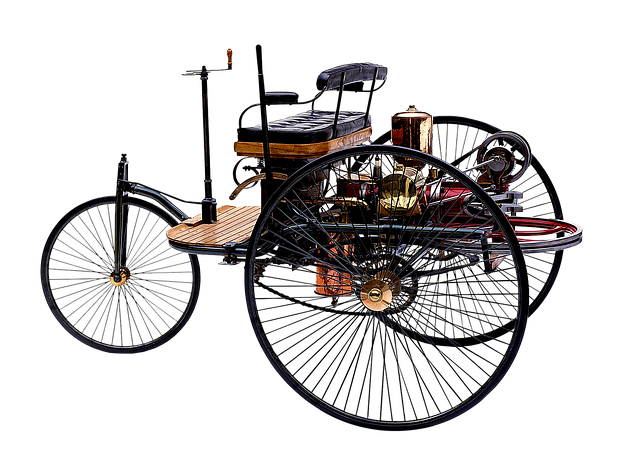“Looking to register your car in California? This comprehensive guide walks you through the entire process, from understanding key requirements to securing your unique Vehicle Identification Number (VIN) verification at the DMV. We’ll outline the necessary documents, detail the registration application steps, and highlight the fees involved. Get ready to hit the road legally and confidently!”
- Understand California Car Registration Requirements
- Gather Necessary Documents for Registration
- Visit the DMV for Vehicle Identification Number (VIN) Verification
- Complete the Registration Application Process
- Pay the Required Fees and Receive Your Plate
Understand California Car Registration Requirements

Before registering your car in California, it’s crucial to understand the state’s specific requirements. The California Department of Motor Vehicles (DMV) mandates several steps for new and existing vehicle owners, ensuring safety and accountability on California roads. One essential step is the DMV vin verification process, which involves a comprehensive inspection of your car’s unique Vehicle Identification Number (VIN).
This verification ensures that your car meets all necessary standards and helps in tracking its history. Whether you’re conducting a traditional VIN inspection at a designated location or opting for a convenient mobile vin verification service, ensuring your vehicle’s compliance is vital. By adhering to these guidelines, California drivers can legally register their cars and contribute to the state’s efficient management of vehicular records.
Gather Necessary Documents for Registration

Before you begin the registration process, ensure you have all the required documents ready. The California Department of Motor Vehicles (DMV) requires specific paperwork for a successful car registration. Key among these is the Vehicle Identification Number (VIN) verification, which can be done through a mobile vin inspection or at a DMV office. This critical step ensures the vehicle’s history and authenticity, so it’s crucial to have your VIN handy.
Gathering all necessary documents, including proof of ownership, insurance, and identification, is essential. A valid driver’s license or state-issued ID card will be required, along with your car’s registration from the previous state (if applicable). For out-of-state vehicles, you might need to undergo a vin inspection to obtain the necessary documentation before registering in California.
Visit the DMV for Vehicle Identification Number (VIN) Verification

After gathering all the necessary documents, it’s time to visit your local DMV for a crucial step in the registration process—vehicle identification number (VIN) verification. This step ensures that your car’s VIN is accurate and matches the records. At the DMV, you’ll need to present your vehicle and its documentation for inspection. A skilled inspector will cross-reference the information on your forms with the data encoded in your car’s VIN, confirming its authenticity.
A mobile vin verifier or a professional vin inspection service can also facilitate this process, offering convenience and potentially faster turnaround times. Some services even provide remote verifications, allowing you to complete this requirement without physically visiting a DMV office. This option is especially beneficial for those with busy schedules or who live in remote areas.
Complete the Registration Application Process

After gathering all the required documents, it’s time to complete the registration application process with the DMV. This involves filling out an application form, providing proof of insurance, and undergoing a vehicle inspection. The key step here is ensuring your car meets all safety and environmental standards. One efficient way to facilitate this process is through a mobile VIN verification service that can remotely inspect your vehicle, saving you time and effort.
By utilizing these modern tools, such as a mobile VIN verifier or inspector, you streamline the verification process. This involves using your car’s unique Vehicle Identification Number (VIN) to access detailed vehicle history information, including any previous accidents or outstanding issues. With this data, you can address any concerns promptly, ensuring a smooth registration experience with the DMV.
Pay the Required Fees and Receive Your Plate

After completing your vehicle’s registration application at the DMV, the next step is to pay the necessary fees and obtain your license plate. This process typically involves a variety of charges, including a registration fee, a vehicle tax, and a title fee if you’re transferring ownership. Before leaving the DMV, make sure to inquire about any additional costs associated with special features or accessoires on your vehicle.
Once all fees are paid, you’ll be given the go-ahead to proceed with plate issuance. The DMV will use the Vehicle Identification Number (VIN) from your car—which can also be verified through a mobile vin verifier or mobile vin inspection for accuracy—to prepare a license plate tailored to your vehicle’s details. You’ll receive your new plates, which must be displayed on your vehicle at all times while it’s operated on California roads.
Registering a car in California involves understanding specific requirements, gathering essential documents, and completing a straightforward application process. After visiting the DMV for crucial VIN verification, you’ll be on your way to securing your vehicle’s registration and obtaining personalized license plates. This efficient system ensures that California drivers meet all necessary standards while enjoying the convenience of a well-organized car registration procedure.



